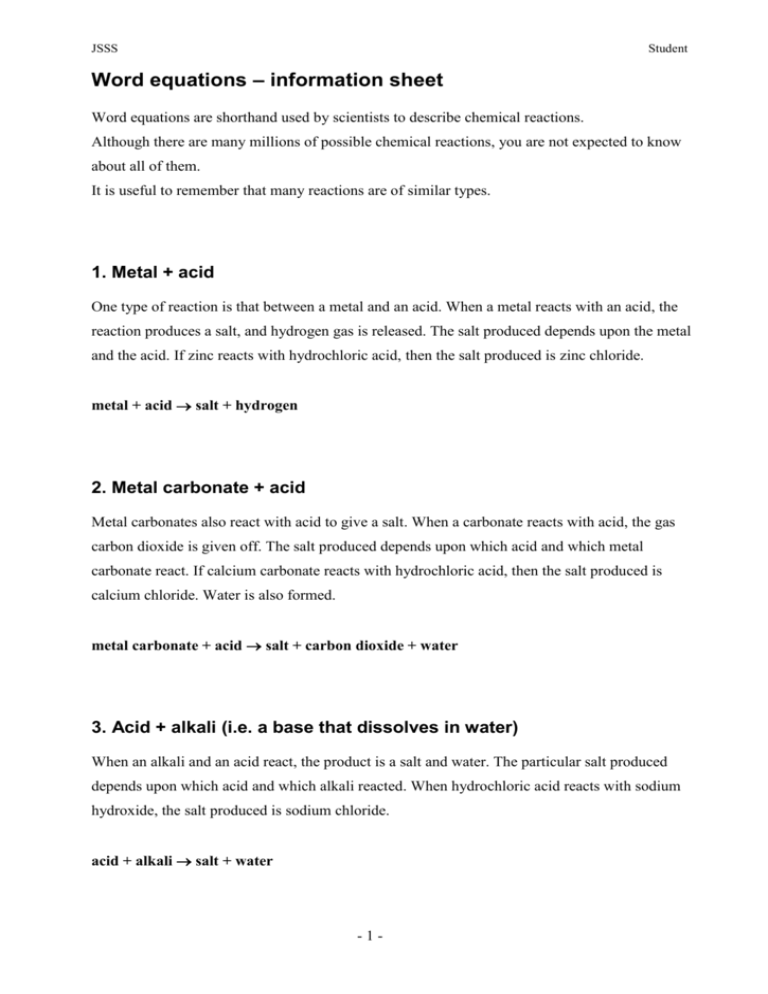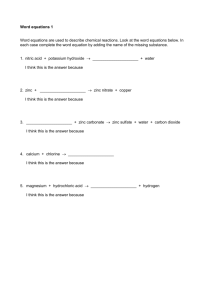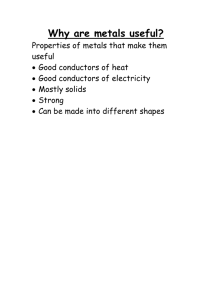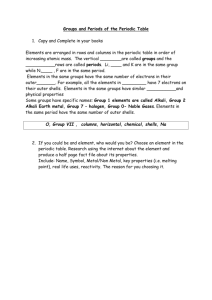Student Support Material
advertisement

JSSS Student Word equations – information sheet Word equations are shorthand used by scientists to describe chemical reactions. Although there are many millions of possible chemical reactions, you are not expected to know about all of them. It is useful to remember that many reactions are of similar types. 1. Metal + acid One type of reaction is that between a metal and an acid. When a metal reacts with an acid, the reaction produces a salt, and hydrogen gas is released. The salt produced depends upon the metal and the acid. If zinc reacts with hydrochloric acid, then the salt produced is zinc chloride. metal + acid salt + hydrogen 2. Metal carbonate + acid Metal carbonates also react with acid to give a salt. When a carbonate reacts with acid, the gas carbon dioxide is given off. The salt produced depends upon which acid and which metal carbonate react. If calcium carbonate reacts with hydrochloric acid, then the salt produced is calcium chloride. Water is also formed. metal carbonate + acid salt + carbon dioxide + water 3. Acid + alkali (i.e. a base that dissolves in water) When an alkali and an acid react, the product is a salt and water. The particular salt produced depends upon which acid and which alkali reacted. When hydrochloric acid reacts with sodium hydroxide, the salt produced is sodium chloride. acid + alkali salt + water -1- JSSS Student 4. Group 1(Alkali) metals + air The alkali metals in group 1 of the periodic table react with oxygen in the air to form oxides When two elements react together to form a compound, the compound is given a name to show which elements reacted. For example, when sodium reacts with oxygen the compound is called sodium oxide. Alkali metal + oxygen (in air) metal oxide 5. Group 1(Alkali) metals + water The alkali metals in group 1 of the periodic table are so called because, when they react with water, they form alkalis (soluble bases) and hydrogen. When lithium reacts with water, it forms lithium hydroxide and hydrogen. Alkali metal + water metal hydroxide + hydrogen 6. Metal + non-metal (element + element) When two elements react together to form a compound, the compound is given a name to show which elements reacted. For example, when calcium reacts with chlorine, the compound is called calcium chloride. These examples show the patterns that are found in six important types of reaction. If you look for patterns, you should find it easier to work out how to complete word equations. In the worksheets you will find some examples to help you practise thinking about word equations. -2-







